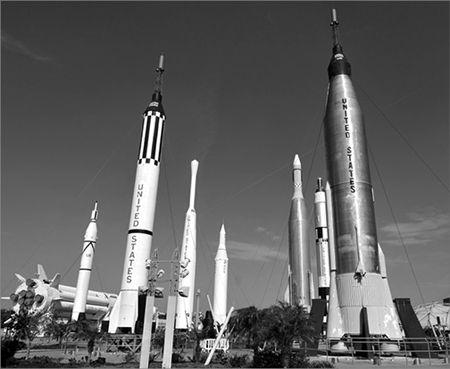Kennedy's Last Days: The Assassination That Defined a Generation (29 page)
Read Kennedy's Last Days: The Assassination That Defined a Generation Online
Authors: Bill O'Reilly


Jack Ruby shoots Lee Harvey Oswald in the stomach.
[Bob Jackson, AP/Dallas-Times Herald]
Jack Ruby is set upon by police. Lee Harvey Oswald slumps and is immediately transported to Parkland Hospital. After arriving, he is placed in Trauma Room Two, right across the hall from the emergency room where John Kennedy spent the final minutes of his life. At 1:07
P.M.
, 48 hours and seven minutes after JFK’s death, Lee Harvey Oswald also dies.
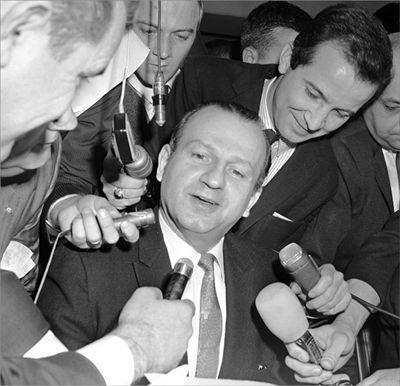
Jack Ruby talks to the press during his lawyer’s effort to move his trial away from Dallas.
[© Bettmann/Corbis]
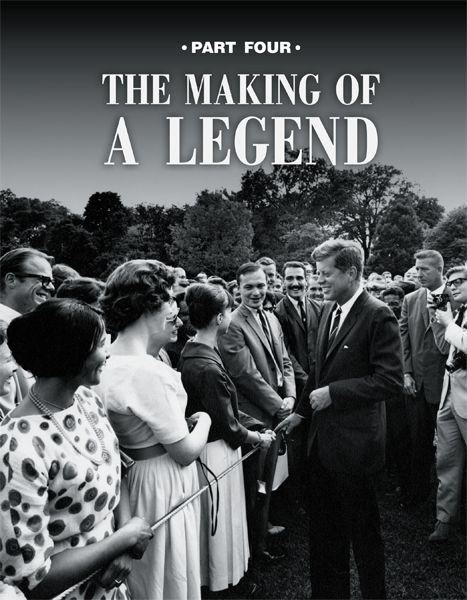

November 24, 1963: A horse-drawn caisson carrying John Kennedy’s casket leaves the White House en route to the Capitol Building, where the casket will lie in state.
[JFK Presidential Library and Museum]
CHAPTER FORTY-TWO
NOVEMBER 24–25, 1963
Washington, D.C.
J
OHN
F
.
K
ENNEDY
’
S CASKET IS LOADED
onto a caisson, a two-wheeled military cart, drawn by seven white horses, and carried down Pennsylvania Avenue to the U.S. Capitol to lie in state. A single black horse follows the casket. It has no rider, just a sword strapped to the saddle and boots placed backwards in the stirrups. All over the world, this riderless horse is a symbol of a fallen soldier.
At the Capitol, John Jr. is led away by an aide. Jackie Kennedy and her daughter, Caroline, stand beside the casket. Jackie’s dignity touches everyone who sees her.
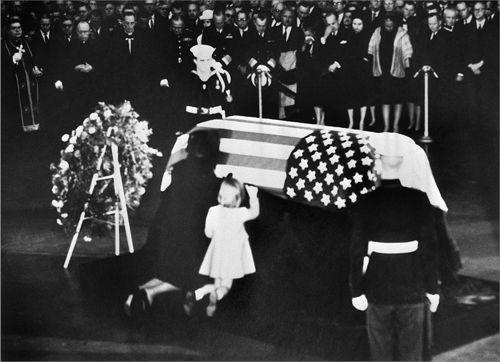
November 25, 1963: Mrs. Kennedy and Caroline kneel at the president’s casket in the Capitol Building.
[© Bettmann/Corbis]
After a brief ceremony, the family leaves and the public begins filing past. They have waited in line, some for as long as 10 hours, to pay their respects to President John Fitzgerald Kennedy. Television will show the slow procession all through the night until 9:00 the next morning.
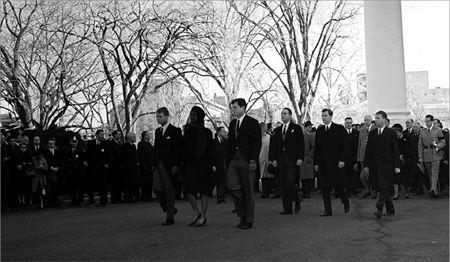
Robert Kennedy, Jackie Kennedy, and Edward Kennedy lead the funeral procession from the White House to St. Matthew’s Cathedral. Among the people behind them are the president of France, the emperor of Ethiopia, the queen of Greece, the vice-chancellor of Germany, and the king of Belgium.
[JFK Presidential Library and Museum]
Heads of state from around the world begin arriving at the airports.
Monday, November 25
The funeral on Monday at St. Matthew’s Cathedral is televised, watched by an estimated 180 million people around the world. Nineteen heads of state and three reigning monarchs attend. After the service, the casket is once again carried to the caisson. Jackie Kennedy and Caroline and John stand as it passes. Mrs. Kennedy reaches down and whispers to young John. The three-year-old then salutes as the casket passes by.
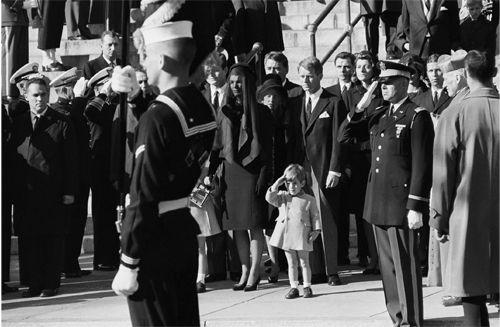
The final procession to Arlington National Cemetery is miles long. At the grave site, bagpipes play and 49 jet planes zoom overhead, one for each state with one missing, followed by
Air Force One
, which dips a wing over the grave in salute to the fallen president.

The funeral procession crosses the Lincoln Memorial Bridge to Arlington National Cemetery. Black Jack, the riderless horse, follows the caisson.
[© Wally McNamee/Corbis]
As a final gesture, Jackie Kennedy bends to light an eternal flame that will mark the grave site. The funeral is over.
* * *
For the next days, months, and years, people will discuss and debate the contributions, accomplishments, and failures of John Fitzgerald Kennedy’s 1,036 days in office. His legacy will thrive in institutions such as the Peace Corps, in scientific efforts such as landing a man on the moon, in the Civil Rights Act of 1964. And he will be forever credited with stopping a nuclear war with the Soviet Union. But most of all, Kennedy will be remembered as an inspiration to a generation of young people, urging them to reach for ideals and use their talents wisely in service to their fellow men.
CHAPTER FORTY-THREE
THE KENNEDY LEGACY
A
FTER THE ASSASSINATION
,
people mythologized John Kennedy. The slain leader grew larger than life in people’s memories. Decades after his assassination, we still see evidence of his influence and inspiration around us.
A Man on the Moon: The Space Program
On May 25, 1961, in an address to Congress, President Kennedy said, “I believe that this nation should commit itself to achieving the goal, before this decade is out, of landing a man on the moon and returning him safely to Earth.” He went on to allocate millions of dollars to the space program. Kennedy’s dream was fulfilled on July 20, 1969, when Neil Armstrong became the first human to set foot on the moon. Edwin “Buzz” Aldrin Jr. and Michael Collins were the other astronauts on that historic journey.
